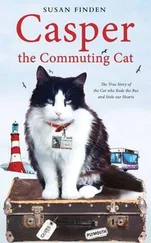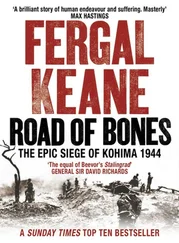“No,” said Carl Watson, a balding, forty-five-year-old yachting industry consultant who had been sailing on the Sword for close to a year, “we’ve already decided on three watches.”
Watson was another crewman who had warned Kooky against adding Kulmar and Glyn. He realized that the Sword could use two first-class drivers, but he didn’t like the idea of adding anyone—whether it was Kulmar or an Olympian—to the crew at the last minute. “Glyn might be a fantastic helmsman,” Watson said to Kooky a few days before the race, “but it’s a late call. He doesn’t know anything about the boat—he’s never been on it—and we haven’t even met him.”
Standing on the dock, angry that Kulmar was trying to impose changes, Watson refused to give any ground. “We’re having three watches. There’s a good chance we’re going to get some bad weather, so we need to have more of the crew on duty.”
A little later, Kulmar and Watson had another disagreement. “What’s this?” Kulmar asked, pointing to a large bag that obviously contained a spare mainsail. “We don’t want to take two mains. It’s nothing but extra weight.”
“Yes, we do,” Watson said. “We’re taking it. We’ve already made the decision.”
“This is bullshit,” Kulmar thundered. “It weighs far too much. It’s stupid. I’ve done more Hobarts than anyone on this boat—and it doesn’t make any fucking sense to take two mains.”
“I’ve done exactly the same number of Hobarts as you,” Watson said. “Seventeen.”
“I’ve won more.”
Watson wasn’t about to back down. Like Dags, he thought Kulmar was mounting a one-man takeover, and thought the only way to stop him was to confront him at every turn. “Your job is to steer the boat,” Watson said. “Nothing else. You’re not the skipper.”
Yachting is full of hard-charging men who are used to having their own way. On many yachts, crewmen regularly scream at one another, and it sometimes seems as if tensions will boil over into ugly confrontations; the harsh words, however, are usually deceptive. The shouting and cursing is typically about small things—the need to raise a sail faster or clean up a mess in the galley—and the outbursts are quickly forgotten. Watson, whose main role on the Sword was to trim the mainsail, wasn’t surprised by Kulmar’s aggressive behavior, but that didn’t make him any less angry as he walked down the dock. Kulmar’s attempt to assume control was a serious matter, and Kooky was the only person who could resolve it.
After hearing from Watson, Kooky agreed to tell Kulmar that they were going to carry two mainsails, but Kooky was unable to decide what to do about what Watson said next: “You have to tell Kulmar that he’s not the skipper, that he’s not going to be making the decisions—or we’re going to have a real problem.”
WITH A TATTERED chino wardrobe, a gray beard, and a pipe hanging from his mouth, Richard Winning, the owner of the Winston Churchill , looked as if he were from another age. In fact, he wasn’t entirely comfortable with the modern world. Rather than buy a sleek new racing yacht, he had chosen to spend a quarter of a million dollars rebuilding the Churchill , which was constructed in Hobart out of Huon pine in 1942. Winning, who was forty-eight, was a child when he first saw the boat, and it was love at first sight. When the yacht came up for sale two years before the 1998 Hobart, he jumped at the chance to become its owner.
A classic yacht with a teak deck, brass fittings, and an oyster white hull, the Winston Churchill was one of the best-known yachts in Australia. It was among the nine boats that had competed in the first Hobart, and since then it had sailed in fifteen others, twice circumnavigated the world, and become an icon for a bygone era of graceful wood-hulled sailing yachts.
Life had been good to its owner. Winning ran part of the retailing company his great-grandfather had founded in 1906. It adhered to principles that seemed almost quaint, refusing to borrow money or to spend much on advertising, but business was booming. Winning, however, found little enduring satisfaction in financial success. He had the gnawing sense that he was part of a generation that has never faced the kind of challenges that men should. “All blokes want to be tested,” he liked to say. “We’ve had it too easy.”
For him, racing a distinguished old yacht with a crew that included several of his oldest friends was more than a sporting event or an escape from everyday life. It was a chance to reenter the natural world, to be a part of a great undertaking, and to do battle with a force that was bigger than any man. It was also a test in which things he considered genuine—seamanship, old-fashioned workmanship, and camaraderie—determined success. In a time when the most celebrated achievements involved technology and stock prices, Winning was more drawn to the sea than ever, in part because it still presented the same challenges it did when the Churchill was launched. Winning’s crew shared his way of thinking. John Stanley was its most important member. Stanley had sailed fifteen Hobarts in his fifty-one years and was, like the Churchill , something of a legend. He had been called Steamer ever since a childhood friend said he had as much energy as a steam-powered Stanley Steamer motorcar.
Steamer started sailing dinghies when he was eleven, and the sea had held an unshakable allure ever since. He had competed in many of the world’s great long-distance yacht races. In 1980 he crewed in the America’s Cup for Alan Bond, the Australian rogue who won it three years later, ending the New York Yacht Club’s 132-year reign and what had been the longest winning streak in any sport. In 1998, Steamer was working for Winning as a foreman in a boatyard Winning owned, although on the water their roles reversed: there, it was often Steamer who made the decisions.
Over the previous few years, both of Steamer’s hips had been replaced, and he walked with the hobble of a mechanical duck. In the months before the race, one of his kidneys was removed after it was found to contain a cancerous tumor, a large melanoma was cut away from his right forearm, and asbestosis was discovered in one of his lungs. But Steamer wasn’t about to let any of that get in the way of racing. He simply had to sail. Even in appearance he seemed destined for the water. With his broad mustache, sizable jowls, and barrel-shaped chest, he looked like a walrus.
As much as anything, Steamer loved sailing’s history and traditions. Sometimes, after he had had a few beers, he would tell his friends that he thought modern society valued the wrong things, that there weren’t enough people interested in learning how to make things or in developing the kind of seamanship that’s required for long-distance ocean racing. “All the races are getting shorter. No one has the time.” One of the things Steamer liked most about long-distance sailing was how a group of men from every imaginable background, living and working together in close quarters, got to know one another in a way that just didn’t happen in normal life. “Whether you’re rich or poor doesn’t make any difference when you’re on the water,” he would say.
One of the Churchill ’s crewmen, Michael Bannister, drove a one-man garbage truck for a living. As a teenager, Bannister told friends that he was going to join the marine police or work on a ferry after he finished school. A high-school guidance counselor talked him out of those ideas, but when he was drafted to serve in Vietnam and an application asked what part of the army he would like to serve in, he wrote, “Small ships, small ships, small ships.” He ended up working on an ammunition supply vessel, and upon returning to Australia, he worked as a department-store salesman for a while, then began driving various kinds of trucks. When he wasn’t on the road, he was on the water.
Читать дальше












